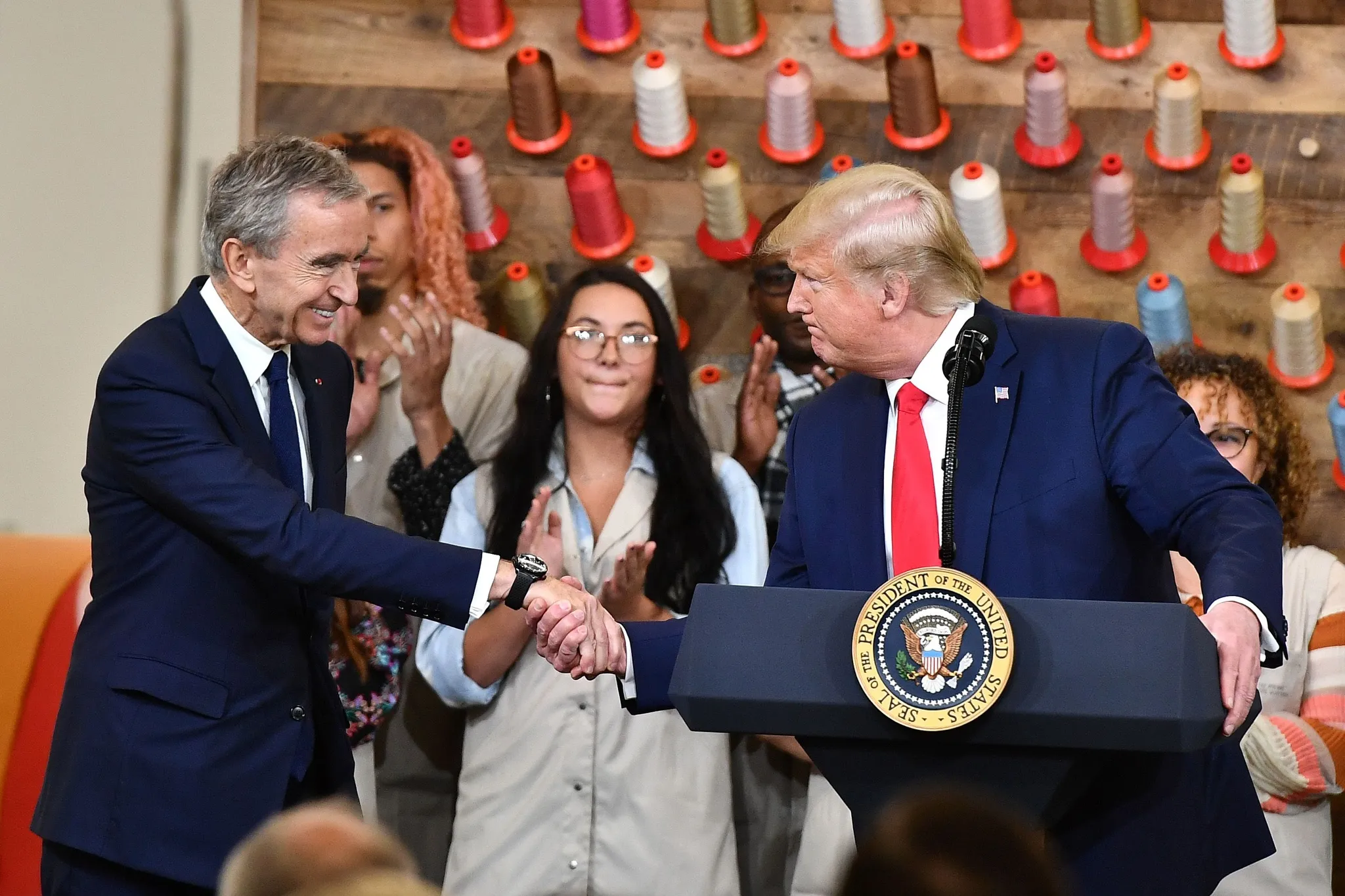President Donald Trump’s sweeping tariffs, announced in January 2025, are poised to deliver a major blow to LVMH, the French luxury conglomerate behind Louis Vuitton, Dior, and Tiffany & Co., potentially costing the company $2 billion annually in U.S. sales. With Trump imposing a 25% tariff on EU imports, including luxury goods, and a 60% tariff on Chinese imports, LVMH’s U.S. operations—accounting for 30% of its $86 billion 2024 revenue, per company reports—are under threat. This escalation of the U.S.-EU trade war, driven by Trump’s America First policies, could shrink LVMH’s margins, force price hikes, and drive American consumers to domestic brands, reshaping the global luxury market.
LVMH, the world’s largest luxury group, relies heavily on the U.S. market, where Louis Vuitton bags, Dior perfumes, and Tiffany jewelry generate $26 billion annually, per market analyses. Trump’s January 2025 executive order, per White House statements, slapped a 25% tariff on all EU goods, including LVMH’s French-made products, and a 60% tariff on Chinese imports, targeting LVMH’s supply chain, per industry reports. These tariffs, effective since March 1, 2025, per U.S. Trade Representative (USTR) announcements, aim to protect American jobs but threaten LVMH’s profitability, per financial forecasts.
Analysts estimate LVMH could lose $2 billion in U.S. revenue in 2025, per Bloomberg, as tariffs raise costs on leather goods, jewelry, and perfumes, per company supply data. LVMH’s CEO, Bernard Arnault, warned in February 2025 that price increases of 15–20% on U.S. products, per Reuters, could alienate luxury shoppers, per consumer surveys. U.S. sales of Louis Vuitton handbags, already down 5% in Q4 2024 due to inflation, per retail reports, could drop another 10%, per market projections, as Americans turn to domestic brands like Coach or Michael Kors, per industry trends.
LVMH’s supply chain, relying on Chinese leather and components, faces a 60% tariff hit, per USTR data, raising production costs 12%, per supply chain analyses. This could force LVMH to shift manufacturing to the U.S. or other low-tariff regions, per strategic reports, but delays and costs—estimated at $500 million, per industry estimates—could take two years, per company statements. LVMH’s 2024 profit margin of 18%, per financial reports, could shrink to 14% in 2025, per analyst forecasts, threatening its $400 billion market cap, per stock market data.
The EU’s retaliatory tariffs, imposing 15% on U.S. whiskey and 25% on American jeans, per European Commission announcements, won’t offset LVMH’s losses, per trade analyses, as U.S. luxury demand outstrips EU exports. LVMH’s 2025 strategy, per company filings, includes absorbing 10% of tariff costs, raising prices 10%, and lobbying for exemptions, per industry reports, but U.S. consumer backlash—70% opposing price hikes, per a 2025 consumer survey—could deepen the hit, per retail data.
This trade war highlights Trump’s America First agenda, prioritizing U.S. luxury brands like Ralph Lauren and Tapestry, per market reports, over foreign giants like LVMH. U.S. sales of domestic luxury goods rose 8% in Q1 2025, per retail surveys, as tariffs shield American firms, per economic data. LVMH’s U.S. job cuts—1,000 positions planned, per company announcements—contrast with Trump’s 2025 pledge to create 500,000 U.S. manufacturing jobs, per White House reports, fueling political tension.
The impact extends globally. LVMH’s 2024 China sales, down 3% due to economic slowdown, per company reports, could drop further if U.S. tariffs disrupt supply chains, per market analyses. Europe’s luxury market, already strained by inflation, per economic data, may see LVMH shift focus, but U.S. losses could cost $5 billion in global revenue by 2026, per industry projections. Investors, per stock market reports, sold $10 billion in LVMH shares since January 2025, per trading data, signaling concern.
Trump’s tariffs are reshaping luxury, boosting American brands while challenging LVMH’s dominance. As LVMH navigates this storm, its U.S. strategy and global footprint face a reckoning, driven by a trade war that prioritizes America’s economic might over foreign luxury empires.
